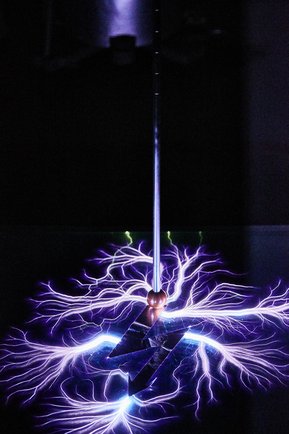Innovation Idea: Direct Current

When it comes to the new age of the energy sector, people usually think of the energy revolution and the switch to renewables. But there is another turning point involved here: the shift from alternating current to direct current. The future of energy supply using direct current factors in the changes in daily energy usage. Despite the major challenges in research, development and implementation, there are benefits in many respects here.
Improved energy conversion efficiency
Up to now, the energy production structure has been based on the generators in huge power plants. The energy is distributed via an AC grid. This procedure is in place as a result of the centralised infrastructure. However, it no longer fits in with the many decentralised generators that penetrate the grid, including photovoltaic units that provide energy as direct current and battery storage devices in electric cars that feed energy back into the grid when the vehicle is parked. As the conversion from AC to DC incurs losses, there are clear benefits to using only direct current where generators are concerned.
More efficient transmissions
With renewable sources, power is increasingly consumed where it is produced. This alone is in direct current’s favour, as the benefits of the AC grid with its low energy losses are no longer relevant. However, transmission losses have since been on the rise across longer distances. So, for example, networks with high-voltage direct current (HVDC) transmission are in the pipeline in China, while in Germany two HVDC lines, which carry wind energy from the coast to the south, are in the planning stages. A HVDC connection is worthwhile for distances of around 400 kilometres or more through lower energy losses alone, even though construction is twice as expensive.
Increasing efficiency levels
The greatest advantage of switching to direct current is, however, energy consumption. The overall efficiency of the mains grid, which was recently estimated to have dropped to 56 percent, could be increased through DC. One third of electric energy used to be lost on the way from the power plants to vacuum cleaners or light bulbs powered by alternating current. These days, once converted from the direct current supplied by photovoltaic units for consumers and their computers, LCD televisions or smartphones, the alternating current needs to be converted back to direct current – and both processes cause losses.
Huge potential for industry to make savings
Industry accounts for 48 percent of Germany’s net electricity consumption, 70 percent of which is from electric motors. It, too, needs to handle these losses. It has been said that a tenth of the energy could be instantly saved through electric motors. The use of electronic speed control could potentially save a further 30 percent here. And if these frequency converters for speed control were operated using direct current, there would be no more conversion losses here, either. Running on direct current would not just lead to lower conversion losses. Other benefits include higher levels of stability in the power grid through reduced harmonics, simpler methods to incorporate decentralised renewable energy sources and energy recovery, for example through braking energy and storage in batteries. So DC technology promises to save money, which would soon make up for the costs of converting to direct current.

